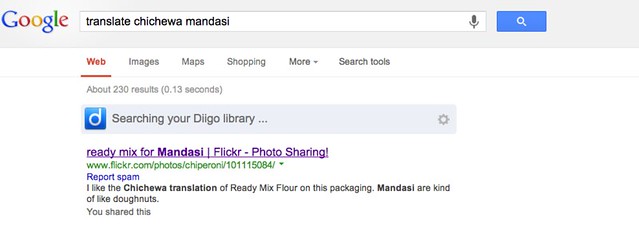I heard about this useful Schema generator for FAQ pages
Tag: seo
-
SEO for B2B services and products: How to get started?
A couple of weeks ago, I was asked to provide some free consulting on how I would start SEO for a new B2B services or products company.
Here are my notes:
#Sandra’s advice on how to start
There are different kinds of web visitors. Try to find groups and segments, and the info that they are looking for.
These include:
- Existing clients
- Potential clients
- Job seekers
- Investors / stakeholders
- Journalists
Learn as much as you can about your web visitors, clients and potential clients.
- What are their interests?
- What do they read?
- What are their work goals? What do they need to achieve?
- What are trends and changes affecting the industry?
- What are the challenges?
- How do clients select a product/service?
- What are the painpoints?
- What happens when a project fails?
- How long is the evaluation time before a product/service is purchased?
Build a persona description for each important web visitor group. This will help you create web pages and blog posts tailored to this type of web visitor.
Interview clients (if you are allowed to) and client-facing staff (if you are not).
Analyse the websites of competitors.
Remember, products and services that achieve a similar solution to yours are also competitors. I encountered technology companies that argued there’s no competition for their new service. Many times they ignored substitutes.
#Factors influencing SEO (cross-clicks, anchor texts?)
Follow best practices for on-page SEO.
On-Page SEO: Anatomy of a Perfectly Optimized Page (2017 Update) https://t.co/QJuq8sfJGT via @Backlinko
— Panchenga (@nchenga) October 17, 2017
Remember that page titles and meta descriptions are the very first texts that a web visitor will see in the SERPs. Prepare these two with care.
For any web page, these elements remain important:
- Page title
- Heading 1
- Heading 2
- Internal links within the main body of the text
- Backlinks from relevant, high quality websites with good anchor text
Follow the tips in this article on RankBrain:
- 301 redirects for missing pages
- rel=canonical tags for duplicate content
- optimize structured data and alternative tags
- resolve any broken links
Publishing long paragraphs without headings, bullet lists, images is a recipe for failure. Many people scan thru a web page before they dig in.
Remember that Google is looking at many additional factors. It measures engagement.
#Keyword research
Think in topics.
Consider search intent. Are search words informational or transactional? Always check the SERPs to see what kind of results display.
Voice search is changing how keyword research has been done in the past couple of years. Expect more 3-word phrases, more questions, more variants as people search by speaking to Cortana, Alexa, and Google Voice Search.
#Content/Inbound marketing
Content should be “useful” for your clients, help them achieve their work goals faster, educate them.
Who cares if you are the world leader? Can you solve my business problem? Are you a reliable provider? This is more relevant to me.
Here’s a good test:
- Is it useful?
- Is it aligned (with both reader needs and business goals)?
- Is it unique?
Regular blog posts:
- Blog as often as you can without comprising on quality.
- Produce short, useful videos (20 to 30 seconds long).
- Share your slide decks.
You need both: Quality and quantity.
If you can: Try two new blog posts per week. Higher frequency helps you find what will stick faster.
#Platforms (B2B) to target, content, frequency
Find out what your competitors are doing (special industry platforms?, Twitter? Linkedin? Whatsapp groups? Chatbots?)
Linkedin is probably the best B2B social media platform of the moment.
Build communities of people interested in your service.
Promote your content on social media.
#Measurement and evaluation
Tools I use regularly include:
- Google Analytics
- Google Search Console
- Ryte.org
- SEMRush
- Linkdex
- Brightedge
Measure the number of leads to try and find what kind of pages or marketing activity will convert better.
Find out how many sessions you need to convert a web visitor into a lead.
Get a tool like OpenInbound.com or Leadberry.com to see the customer journey on your site.
WordPress plugin for OpenInbound:
https://wordpress.org/plugins/openinbound-for-wp/Drupal module for OpenInbound:
https://www.drupal.org/project/openinbound
Measure usability with Hotjar or Crazy Egg.#References on internet marketing for further studying
I read a huge amount of SEO news. Regular reads include:
Moz.com
Backlinko.com
Searchengineland.comBe careful, even wary, of case studies, success stories, sweeping generalizations, easy fixes.
#Consider the interdisciplinary nature of SEO
Technical aspects, content, interaction design, usability, marketing strategy need to play together.
Build a small, agile team.
-
What will an SEO audit be like in 10 years?
A couple of months ago, I went thru an SEO audit. I wanted to write a blog post to reflect on what I learned. This is my feeble attempt to collect my thoughts and jot down some notes. Where available, I’ve tried to list my source links.
What is an SEO audit? In an audit, your website is analyzed and checked (often by an external SEO specialist) to be sure that it complies with SEO best practises.
12 items to consider:
- GWT is your best friend.
I spent a lot of time working my way thru Google Webmaster Tools, cleaning duplicate title and meta description tags. Duplicate title tags are a negative quality feature for Google. Sources of duplicate title tags are- non-translated title tags,
- content management software settings, e.g. showing the same mono-lingual Drupal view in several website languages.
GWT is the place to find these. Same for missing title tags. Or meta descriptions that are too short. Or the index status, which shows you how many pages are indexed.
- Follow a holistic approach. If you think you’re all set ‘cos you have had your new web design and navigation tested for usability by a user experience expert… Think again. You need to involve SEO early on in your design project. Ask for SEO guidance once you’ve gone thru the card sorting/information architecture steps. Check your designs from an SEO perspective. Write content in close collaboration with your SEO analyst.
- Question the SEO impact of new website features.
Ask your web developers about the SEO side-effects of adding new features and changes. I learnt that website changes to make a website responsive and mobile-friendly may add unintended SEO problems, e.g. ‘cos the changes added a second hidden navigation which Google cannot identify yet. - Ignore SEO noise.
A lot of the SEO advice that you read on the web is blabla. Avoid link-bait. Hearsay. Look for reputable sources and SEO specialists that really know their field. - Use the hreflang tag on multilingual websites.
Addrel="alternate" hreflang=xon all web pages. - Check the correct usage of heading tags.
Use only one h1 per page. Keep the order h2, h3, or h4. Don’t jump to an h3 after using an h1.
Check thru the design elements (e.g. navigation, footer, search button, contact form heading, teaser text blocks, or similar for hidden h1s or h2s). - Improve h1 content.
A heading 1 should provide a good summary of what to expect on the web page. Include keywords. - Internal linking.
Add relevant internal links. Add an on-page sitemap. Use footer links for important landing pages, not to repeat the navigation. Never use any hidden sub-page menus. Make sure you use dropdown menus that can be parsed by Google. - Clean up any 302 redirects that may have been added by the content management system.
- Repair or replace all internal broken links. Tool tip: I used Integrity for Mac.
- Page speed matters.
Check Google Page Speed Insight to improve the loading time of your site. - Check the XML sitemap.
The XML sitemap should only include pages with status code 200. Use the real, final URL in the XML sitemap, not the CMS page ID.
What will an SEO audit look like in 10 years? That is an intriguing question. I have no idea which way SEO will go. My guess is as good as yours. I do know that SEO is getting quite complex. And may even be replaced by *something* entirely new. If you are a website manager, my advice is to dig in and ask lots of questions.
Look at all aspects. Take a holistic approach. Try to form a cross-functional team (designer, ux researcher, web developer, SEO expert, content writer).
If you do search on Google, remember the search engine result on page 1 is not necessarily the best content, but the best optimized content. Use Google search operators to get you off the beaten track. And there are alternatives like DuckDuckGo and Wolfram Alpha, which we should support more to avoid monopoly and manipulation.
Related links
GWT resources:
http://www.lunametrics.com/blog/2014/05/21/how-to-use-google-webmaster-tools-for-seo/On-page factors:
https://moz.com/learn/seo/on-page-factorsDuplicate content:
http://www.hobo-web.co.uk/duplicate-content-problems/
https://support.google.com/webmasters/answer/66359?hl=enHow to carry out a content audit:
https://moz.com/blog/content-audit-tutorialTechnical Site Audit Checklist: 2015 Edition:
https://moz.com/blog/technical-site-audit-for-2015Disclaimer:
All mistakes are my own. Please let me know if I got something really wrong. I’m here to learn. These notes help me to reflect and learn. - GWT is your best friend.
-
Moz on overall SEO strategy
For future reference:
Questions to consider before you delve into the details
"What does our organization create that helps solve searchers' questions or problems? " http://t.co/tPTJq5Z6FB
— âœ___CollectThisTweet (@nchenga) February 4, 2015
-
Google Hummingbird links
The latest addition to the SEO zoo is a hummingbird.
The algorithm change was announced in September 2013 but went live a month earlier.
Searchengineland has some useful background information:
FAQ: All About The New Google “Hummingbird” Algorithm
Hummingbird’s Impact On B2B Sites
Apparently this release will improve Google’s ability to predict a user’s search intent.
Conversational search has been improved.Looks like Google+ might be another factor to add to the 200 items Google looks at? Search Engine Journal says:
Apparently the advice remains the same: develop original, high-quality content.
See Searchengineland’s SEO success factors.
-
Intro to SEO and SEM
I am faced with the challenge to explain SEO and SEM in a 1 hour presentation. The audience consists of business folks.
Where to start explaining is the hard part.
Also there are so many myths in this area – garnered by SEO vendors selling their services as a “Wunderwaffe” for instant web traffic success.
As is typical at Chiperoni headquarters, here are a couple of ideas and a rough outline for my presentation.
Ideas and links
I liked this section of Derek Powazek’s recent criticism of all things SEO:
The One True Way
Which brings us, finally, to the One True Way to get a lot of traffic on the web. It’s pretty simple, and I’m going to give it to you here, for free:
Make something great. Tell people about it. Do it again.
That’s it. Make something you believe in. Make it beautiful, confident, and real. Sweat every detail. If it’s not getting traffic, maybe it wasn’t good enough. Try again.
Then tell people about it. Start with your friends. Send them a personal note ”“ not an automated blast from a spam cannon. Post it to your Twitter feed, email list, personal blog. (Don’t have those things? Start them.) Tell people who give a shit ”“ not strangers. Tell them why it matters to you. Find the places where your community congregates online and participate. Connect with them like a person, not a corporation. Engage. Be real.
Then do it again. And again. You’ll build a reputation for doing good work, meaning what you say, and building trust.
It’ll take time. A lot of time. But it works. And it’s the only thing that does.
‘Cos it explains why you can have all the SEO you want but without personal drive, it will take you nowhere. It’s the content that matters.
Within a larger organization, this personalized focused drive isn’t always possible and needs to be planned and managed carefully.
Derek’s approach misses some aspects. As pointed out by Danny Sullivan at “An Open Letter To Derek Powazek On The Value Of SEO”. Many aspects that long-term bloggers learnt between the lines while trying to google-bomb their way into the top 10 are unknown to website owners and need explaining. (May I take this opportunity to remind my blogging friends that I am still the top hit for “boring flower snapshot”? Yes, I may).
Rough outline
Here’s a first outline, which I’ll convert into PPT slides on Monday:1. SEO – from directory lists to a secret search algorithm
2. White hat SEO vs. black hat SEO
Goodbye to link farms, Keyword stuffing, Cloaking, Redirects3. Myths and legends
4. Technical Aspects of SEO
5. The Google Webmaster Guideline
Web developer must clearly have SEO thoughts in mind when building the site:- Title tag
- Meta description
- Keywords
- Clear navigation structure
- Readable URLS
But this is only the basis…
6. Writing for the Web and SEO
How to get into the top 10 search items for a search phrase:
- Technical aspects – is your website conform with Google Webmaster Guidelines?
- Keyword research – identify 5 to 12 keywords that users will enter to find a service or product
- Content – write copy that supports the buying process and incorporates your main keywords, see “Content drives action”. Write for people not search engines. Incorporate keywords intelligently. At the end of the day, it is people that will read and share your link.
- Coherence – the whole site with its meta tags and content must fit together – in German we say the site “muss stimmig sein“.
- Frequency – the Internet has become more dynamic than ever. The real-time web is here to stay. The companies and the technologies may/will change. But the concept will remain. It is like an ocean of data, seeping around us. Create a flow of articles, news items and events at regular intervals. To continue the analogy – offer a stream of data that grows into a river and forms a wide tributary when it reaches the ocean.
- Outposts – Google decides how important a website is based on the number of back-links. Strive to get listed within your industry sectors leading websites and online directories. Publish articles at external news sites. Use online PR distribution services such as PRWeb. Build your online reputation. Links from non-relevant, off-topic sites will have no impact on your search engine ranking.
- Patience – it takes time to build web reputation. No instant fix.
- Old “traditional” media vs. new “online” media – don’t neglect one or the other. Use all distribution channels to make your marketing message known. But – an important but – read the TOS at Facebook, Twitter beforehand. Maybe your company cannot afford having its data locked in by some of the TOS we see these days. Just like with print, be aware that some new media may not be beneficial for your product or service.
What do you think?
Other aspects to consider?












